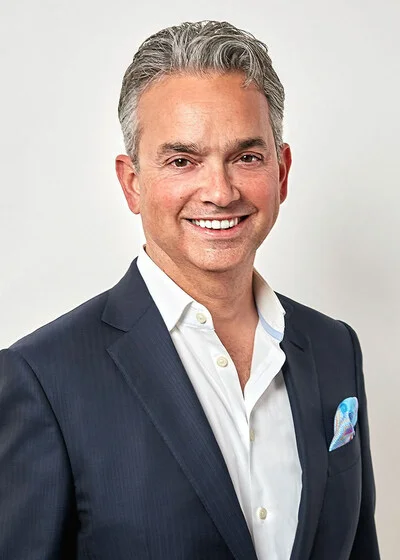Otoplasty (for Protruding Ears)
Otoplasty “pins back,” reshapes, or re-sizes ears that are larger or protrude more than desired. Otoplasty cannot improve hearing, but it can improve your appearance and self-esteem. Ear surgery in Hagerstown, MD can offer great benefits to patients of all ages, but it is most often sought for children or adolescents who are self-conscious or suffer teasing from others. Through this simple procedure, the teasing can be alleviated, allowing self-confidence in children can grow.

What can otoplasty correct?
At Plastic Surgery Services, Hagerstown plastic surgeon Dr. Garazo can perform otoplasty to correct numerous aesthetic ear issues. Although the procedure is most commonly sought to correct protruding ears, it can also address other issues such as “lop ear” where the tips of your ears bend down, “cupped” or very small ears, as well as “shell ear,” where the outer ridges or creases of your ears are missing. Dr. Garazo can also correct large or stretched ear lobes, making them more proportional to the rest of your face.
“Dr. Garazo and staff are amazing to work with. They are very professional and personable. They take the time needed to make your experience comfortable. They care about each and every one of their clients. Before, during and after my procedure I always felt at ease. I highly recommend Dr. Garazo.”
—5-Star Google Review

What to Expect from an Otoplasty Procedure
Ear surgery is generally an outpatient procedure, performed under general anesthesia. Children and adults can usually return to work or school after 5 to 7 days.
- Key Benefits
- Glossary
- Reduced Ear Prominence: Ear pinning surgery specifically addresses ears that stick out too far from the head, bringing them into a position that is perceived as more natural.
- Improved Ear Symmetry: Otoplasty can correct asymmetry between the ears, making them more symmetrical and balanced with the rest of the face.
- Permanent Results: Unlike some cosmetic procedures that may require maintenance, the results of otoplasty are permanent, providing a lifelong solution to concerns about ear appearance.
- Minimal Downtime: Recovery from ear pinning surgery is relatively quick, with most patients resuming normal activities within a week, making it a convenient option for both adults and children.
- Concealed Scars: Incisions are typically made behind the ears, meaning any scarring is hidden and not visible from the front.
- Anesthesia: Medication administered to prevent pain during surgery. In otoplasty, this can be local (numbing the ear area) or general (patient is fully asleep), depending on the extent of the procedure.
- Cartilage: The firm, yet flexible connective tissue that gives shape to the ear. Otoplasty often involves sculpting or reshaping this cartilage to achieve the desired ear shape and position.
- Conchal Cartilage: The main part of the ear cartilage that forms the back portion of the ear bowl, often reduced or reshaped during otoplasty to correct protruding ears.
- Incision: The surgical cut made by the surgeon, typically placed behind the ear to minimize visible scarring. This allows access to the ear cartilage for reshaping.
- Otoplasty: The medical term for cosmetic ear surgery, which is performed to change the shape, position, or size of the ears.
- Pinna: The visible part of the ear; otoplasty modifies the pinna to improve the ear’s appearance or to correct deformities.
- Postoperative Care: Instructions given to patients following surgery to ensure a smooth and successful healing process. For otoplasty, this may include wearing a headband to maintain the new position of the ears.
- Protruding Ears: Ears that stick out more than normal from the side of the head, the most common reason for seeking otoplasty.
- Recovery Time: The period a patient needs to heal after surgery. For otoplasty, initial recovery usually involves a few days of rest, with full recovery and the final results visible within a few weeks.
- Revision Otoplasty: A second surgery that may be needed if the initial otoplasty results are not satisfactory or if complications arise.
- Sutures: Stitches used to close incisions or to sculpt the ear cartilage during otoplasty. They can be dissolvable or non-dissolvable, depending on the specific technique used.

Meet Dr. Henry Garazo

Dr. Garazo is a board-certified plastic surgeon with over 20 years of experience offering aesthetic procedures in the greater Hagerstown, MD area. Known for his thorough, expert, and friendly care, Dr. Garazo is a 6x winner of “Best Plastic Surgeon” in the Herald-Mail Tri-State’s Best Community’s Choice Awards. He prides himself on offering comprehensive, informative consultations and ensures every patient always meets personally with him.
For those considering otoplasty, either for yourself or your child, Maryland plastic surgeon Dr. Henry Garazo invites you to explore your options through a patient consultation. To schedule a consultation at Plastic Surgery Services, contact us online or call (301) 791-1800.
References »
Ordon A, Wolfswinkel E, Shauly O, Gould DJ. Aesthetic Otoplasty: Principles, Techniques and an Integrated Approach to Patient-Centric Outcomes. Aesthetic Plastic Surgery. 2019 Oct;43(5):1214-1225. doi: 10.1007/s00266-019-01441-2.
Stewart KJ, Lancerotto L. Surgical Otoplasty: An Evidence-Based Approach to Prominent Ears Correction. Facial Plastic Surgery Clinics of North America. 2018 Feb;26(1):9-18. doi: 10.1016/j.fsc.2017.09.002.
Siegert R, Magritz R. Otoplasty and Auricular Reconstruction. Facial Plastic Surgery & Aesthetic Medicine. 2019 Aug;35(4):377-386. doi: 10.1055/s-0039-1693745.
Hoshal SG, Morisada MV, Tollefson TT. Reducing Surgical Risks for Otoplasty. Facial Plastic Surgery Clinics of North America. 2023 May;31(2):253-261. doi: 10.1016/j.fsc.2023.01.011.
Handler EB, Song T, Shih C. Complications of otoplasty. Facial Plastic Surgery Clinics of North America. 2013 Nov;21(4):653-62. doi: 10.1016/j.fsc.2013.08.001.
